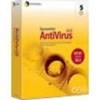Symantec 11281411 Administration Guide - Page 90
Worms, Trojan horses, Blended threats, Spyware, Adware, Dialers, Joke programs, Remote access programs
 |
UPC - 037648327237
View all Symantec 11281411 manuals
Add to My Manuals
Save this manual to your list of manuals |
Page 90 highlights
90 Scanning for viruses and other threats About threats ■ Worms: Programs that replicate without infecting other programs. Some worms spread by copying themselves from disk to disk, while others replicate only in memory to slow a computer down. ■ Trojan horses: Programs that contain code that is disguised as or hiding in something benign, such as a game or utility. ■ Blended threats: Threats that blend the characteristics of viruses, worms, Trojan horses, and code with server and Internet vulnerabilities. ■ Spyware: Stand-alone programs that can secretly monitor system activity and detect passwords and other confidential information and relay it back to another computer. ■ Adware: Stand-alone or appended programs that secretly gather personal information through the Internet and relay it back to another computer. Adware may track browsing habits for advertising purposes. Adware can also deliver advertising content. Spyware and adware can be unknowingly downloaded from Web sites (typically in shareware or freeware), email messages, and instant messenger programs. Often a user unknowingly downloads adware by accepting an End User License Agreement from a software program. ■ Dialers: Programs that use a computer, without the user's permission or knowledge, to dial out through the Internet to a 900 number or FTP site, typically to accrue charges. ■ Joke programs: Programs that alter or interrupt the operation of a computer in a way that is intended to be humorous or frightening. For example, a program can be downloaded from a Web site, email message, or instant messenger program. It can then move the Recycle Bin away from the mouse when the user attempts to delete it or cause the mouse to click in reverse. ■ Remote access programs: Programs that allow access over the Internet from another computer so that they can gain information or attack or alter a user's computer. For example, a program may be installed by the user, or installed as part of some other process without the user's knowledge. The program can be used for malicious purposes with or without modification of the original remote access program. ■ Hack tools: Programs used by a hacker to gain unauthorized access to a user's computer. For example, one hack tool is a keystroke logger, which tracks and records individual keystrokes and sends this information back to the hacker. The hacker can then perform port scans or vulnerability scans. Hack tools may also be used to create viruses.















